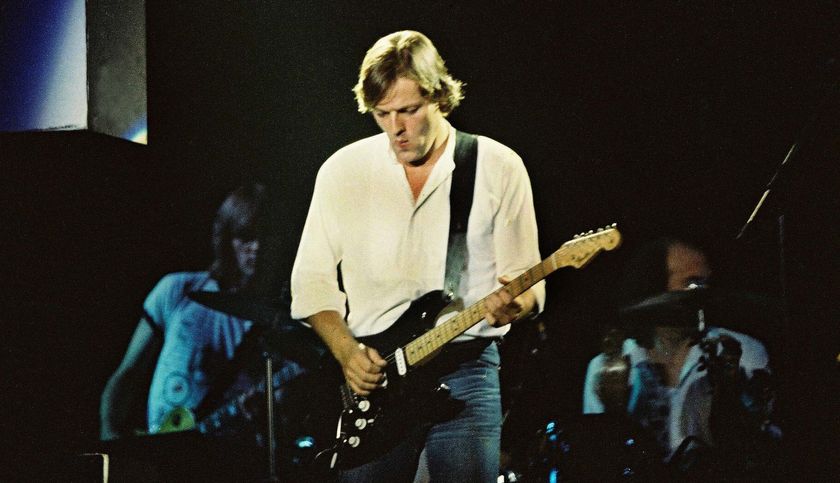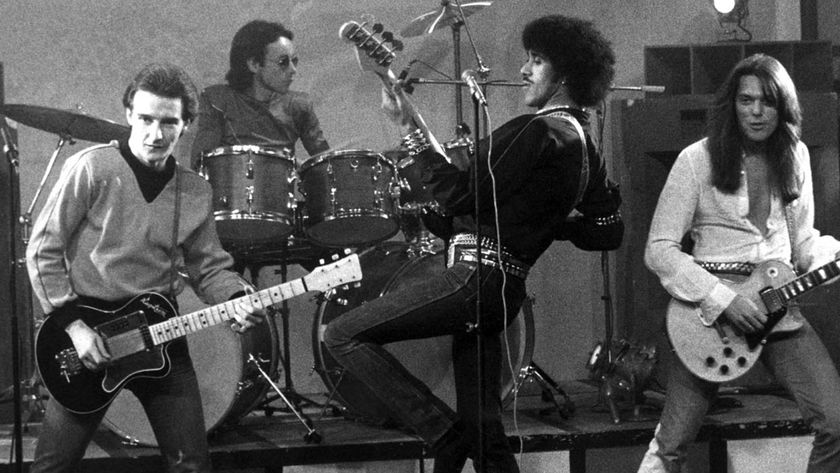“This pickup could have come out of a late-’50s Gibson. If you had a guitar from that era with these pickups, everyone would be like, ‘Wow. That’s a badass-sounding Les Paul’”: How Adam “Nolly” Getgood and Bare Knuckle reinvented the P.A.F. for a new era
Gibson’s P.A.F. has to be the most-cloned pickup of all time, but what if it was used as a launching pad for a humbucker with more oomph? Getgood and Tim Mills of Bare Knuckle might just have the answer with the PolyPaf

It’s a cliche of product marketing to claim that a new piece of gear is ‘revolutionary’. But so much of the gear we use and love as players is really built upon sounds that we already love from classic recordings – and if you want to bring something new to the table, here the name of the game is to take what was inspirational about sounds from the past and carefully prune away their shortcomings and limitations while retaining the sonic soul of the original.
Tim Mills of Bare Knuckle Pickups is an expert in subtly (and not so subtly) tweaking the ingredients in established electric guitar pickup designs to produce something magical: classic at heart but new in spirit and application.
And that is exactly what, in partnership with producer and contemporary metal guitarist Adam ‘Nolly’ Getgood, Bare Knuckle has achieved with the new PolyPaf humbucker, which aims to yield up iconic sounds but which can also handle heavier gain and contemporary styles more confidently. We join Adam to find out more.
Tell us about the inception of the PolyPaf.
“I think the idea for it was in my mind right back from when we designed the Polymath, the pickup we launched a few years ago, which is intended to be a Goldilocks pickup in that it’s right in the sweet spot in terms of output and voicing where you can do anything with it.
“It can do an extraordinarily good job of what you’d want from a high-output pickup without giving you the negatives that might be associated with that. We achieved that really by Tim’s expertise in winding, along with my feedback. He came up with a slightly different way of offsetting the coils of a humbucker. So winding slightly different turns onto each of the coils, particularly on the bridge pickup.”
“It worked so well that it made me feel like I would love to hear that applied to a 42-gauge plain enamel wire – the traditional PAF-style vintage-spec wire – which will obviously give you that more open top-end and more dynamics, and that really amazing swirling complexity.
Get The Pick Newsletter
All the latest guitar news, interviews, lessons, reviews, deals and more, direct to your inbox!
“It wasn’t just the wind. The other thing was that we settled on using this unoriented Alnico V magnet, something that Tim suggested, which is a really huge difference in terms of the sound and the feel when you compare it with the standard oriented Alnico V. You’ve got less output, but [it’s ] kind of a lot more mid-forward and a lot sweeter in the top-end and yet also more juicy in the low-end.
“The combination of those winding decisions and that magnet… I really wanted to hear what would happen if we did something in the PAF’s output range using the PAF wire. Because, as you’ll know – if you’re talking about originals – it was kind of luck of the draw how each PAF was going to come out. Like, had the coils just been randomly put together without any real selection process?
“The problem, when you’re talking about an original PAF, is there’s such a wide range of sounds that you can get from the pickups. But a lot of the PAF-style pickups on the market – either PAF replicas or PAF-inspired pickups – are more focused on the blues and jazz end of things and are really low output.
“They’re quite weak magnets and you get that very lovely [nuanced] vintage sound. But being someone who does like a fair amount of gain in my tone sometimes, I can find that those pickups sound a bit too scooped and harsh by the time you run them through some high gain.
“What I was really keen to hear was what happened if you used an unoriented Alnico V and the Polymath offset on a pickup that otherwise falls within original PAF spec. Because what Tim does in terms of the way the bobbins are made – the maple spacer that’s in there, even the use of unoriented Alnico Vs, which would have been what was around at the time of the PAFs – is all actually within the original spec of the original pickups Gibson were making.”
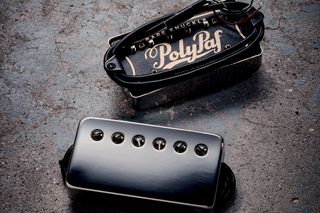
“In applying those things to the bridge pickup, straight away I felt like we created something really special because we ended up with a pickup that had the PAF touch-sensitivity, the openness, the dynamics, the complexity, but it had this really rich midrange and juicy feel. Which is something that I value so much in the Polymath, and it also seems to have struck a chord with players and reviewers.
“This is a pickup that could have come out of a Gibson from the late ’50s or early ’60s. I feel like if you did have a guitar from that era and these happened to be the pickups that were in it, everyone would be like, ‘Wow. That’s a pretty badass-sounding Les Paul,’ or whatever. So it’s just about finding the right combination of variables to take the original PAF spec and make it something that’s very appropriate, still, for vintage applications.”
What musical application would the PolyPaf have in your world, do you think?
“There are a few different applications for the PolyPaf. I’m going to focus mostly on the bridge pickup because I feel like PAF neck pickups are such a well-known sound, and while I feel like we’ve created a really amazing one here, I think it’s the chameleon nature of the bridge pickup that needs to be talked about the most.
“There are plenty of players around now, even in my progressive metal world, who are using less gain – fusion players, too. I’m thinking about guitarists like Plini, Olly Steele and a few others who are not driving super high-gain amps, but they’re playing aggressively, and having a more dynamic pickup with that kind of swirling complexity and open top-end can be a really beautiful thing in that kind of application.
“I’m thinking there are players who do anything from blues, rock through to Southern US rock metal – especially if they’re playing a guitar that has got lots of natural body to it, particularly of tune-o-matic loaded instruments. With those kinds of guitars that are providing quite a lot of body, you can stick a PAF in and it’s still going to sound absolutely huge because the guitar itself is providing so much body.”

“There are also players – and this is something that Tim at Bare Knuckle has championed for a long, long time – who are using really thick strings, or are playing baritone instruments and getting lots of string movement, very heavy string mass, and are generating loads more output that way. Dropping down to a lower-output pickup can really help keep that sound from getting overblown due to the clarity and brightness.
“I’m talking about all this in [the context of] contemporary rock and metal circles, but I really don’t want to get away from the fact that these are still a PAF set. You could use these to play absolutely any style. I have a Seth Baccus hollowbody that arrived earlier this year and Tim wound up some of the first prototypes of the PolyPaf to go into it. It’s an absolutely gorgeous guitar for any style – jazz, fusion, blues – just an incredible-sounding instrument. I really don’t want people to get the impression that this is only a PAF for metalheads.”
“One point I’ll make is that the PolyPafs are not actually super-hot. Maybe they’re a little bit hotter than those very blues- and jazz-focused PAFs, but it’s the combination of the offset [coil windings] and the magnet spec that are bringing the midrange forward in a way that allows it to work for players who are used to hotter pickups, without over-winding it and losing too much top-end.
“In fact, I think that’s kind of the party piece of both the Polymath and the PolyPaf pickups. It’s not that these are like the most overwound PAFs on the market – there are plenty of those around. These are well within the original tolerance you could find in a PAF.”
What guitars do you envisage having PolyPafs in, in your own collection?
“The guitars that I’ve put them in… there’s the Seth Baccus and I’ve got a couple of PRS guitars. I’ve got a Modern Eagle with a Stoptail, a Custom 22 Stoptail… those are amazing donor instruments for the PolyPafs. I think if you’ve got a Les Paul, or anything that you would typically use a PAF-style pickup for, it’s going to drop in really nicely.
I owe so much to Tim. Tim was the first person in the music industry to take notice of what I was doing
“The guitar we created for the promo package for this was a wonderful Manson MA guitar that they built for me in a silver ’burst, again with a tune-o-matic bridge. It’s kind of like a Les Paul-cum-bolt-on-Tele [laughs]. That’s one of the biggest-sounding instruments I’ve got, acoustically. It’s got a big mahogany neck on it and the PolyPafs work brilliantly well.
“What I think it’s not ideal for – and this is always important to say because people can try to tell you that one pickup does absolutely everything under the sun, but it’s just simply not so… They’re not as suited to really bright guitars, unless you want a really brightened up tone.
“It could be brilliant for punk sounds, or if you want brash kerrang; there’s definitely a lot more kerrang to the PolyPaf than the Polymath. If that’s what you’re after, it could be good. But if you have a thinner-sounding instrument that doesn’t have a lot of natural sustain, you might be better served going to a higher-output pickup that’s going to fill out the low-end and give you the kind of compression that guitar would require.”
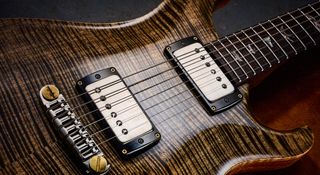
You mentioned working with Tim Mills. Tell us about your working relationship with him as co-developers of pickups.
“I owe so much to Tim. Tim was the first person in the music industry to take notice of what I was doing, which was very little at the time. I don’t even really know how he saw enough of what I was doing to see potential.
“But very early on, back in the early days when you called up Bare Knuckle Pickups and he would answer – I’m talking 15 years ago – he’d talk to you for an hour just about tone and pickups, and maybe after a few of those conversations you might buy a pickup. I was a broke uni student back then!
“But I don’t know if it was just my persistence in calling him, coupled with him hearing a little bit of my playing, but when Bare Knuckle wanted to revamp their website – which is the one prior to the one that’s up now – he asked if I’d like to come down and do the sound clips for all of the pickups. He placed a huge amount of trust in me.

“That was the beginning of a really lovely thing. That’s when I travelled down and I spent around 10 days with him – he would hand me guitar after guitar loaded with the next set of pickups, and I would record clips of all sorts with them that I’d come up with. That was an amazing experience.
At that quite early stage in my career, I had this formative experience of hearing the entire range of Bare Knuckle pickups back to back, played through the same rig
“At that quite early stage in my career, I had this formative experience of hearing the entire range of Bare Knuckle pickups back to back, played through the same rig. Because of that, my ear latched onto what it is that pickups do and how they work with guitars.
“Then Tim involved me in creating some other promotional content talking about basic differences between pickups – the difference, sonically, between a covered and an uncovered humbucker, for example. We went on to have this really rich friendship, where he mentored me a lot and always stayed up to date with what I was doing.
“I would introduce artists to what he was doing and that led to certain things like the Misha Mansoor Juggernaut [pickup set] – Misha being the founding member and guitarist in Periphery, the band that I played in. And because of my understanding of both the pickups and the band, Tim and Misha asked if I could come along and be a part of that prototyping session.”
“I guess that formed the archetype of the process we’d subsequently go through with several artists, including Rabea [Massaad], and the next Misha pickup, and a couple that haven’t come out yet. We used this process of doing blind shootouts with the artists where I’m acting as a producer and Tim is the scientist who isn’t telling us what he’s changing with the pickups as we go, and using that as a process for refining the pickups.
“I feel really privileged to have had as much insight as I have into the creation of pickups. Somehow I’ve got this far without saying it, but Tim really is an incredible pickup winder – his ear for tone and his ability to do stuff without recording.
“And that’s always my benchmark; everything I do, I pretty much don’t believe it until I record it and hear the difference. With Tim, he can just pick up a guitar and plug it in and know. He really relies on the primal intuition that he has, which is so powerful.”
“When the idea of doing the Polymath came about, that was really to service the Manson Oryx guitar that I designed with Manson Guitars, which I wanted to have a unique pickup set.
Tim can just pick up a guitar and plug it in and know. He really relies on the primal intuition that he has
“I didn’t think that I merited having a signature set for sale on the market; I thought we could just design an OEM pickup. But Tim pushed for it to be released and it went on to be really successful. That was something unexpectedly cool, and it seems to have resonated with so many people.
“So – here we are doing it again. It’s such a pleasure to work with Tim, this time a little bit more at a distance with the PolyPaf. Having worked together in close proximity so much, it’s less necessary for us to do the blind shootout thing. I can switch out magnets and other components and install the pickups myself and do my recordings.
“That way, we can each do tests and then have a conversation or get together in the studio – as we did recently with various amps and guitars – and test out the prototypes, so that we can get our heads in front of the same speakers. It’s been a really wonderful process to work with Tim. It’s an honour.”
- PolyPaf humbuckers are available now. See Bare Knuckle Pickups for more details.
Jamie Dickson is Editor-in-Chief of Guitarist magazine, Britain's best-selling and longest-running monthly for guitar players. He started his career at the Daily Telegraph in London, where his first assignment was interviewing blue-eyed soul legend Robert Palmer, going on to become a full-time author on music, writing for benchmark references such as 1001 Albums You Must Hear Before You Die and Dorling Kindersley's How To Play Guitar Step By Step. He joined Guitarist in 2011 and since then it has been his privilege to interview everyone from B.B. King to St. Vincent for Guitarist's readers, while sharing insights into scores of historic guitars, from Rory Gallagher's '61 Strat to the first Martin D-28 ever made.
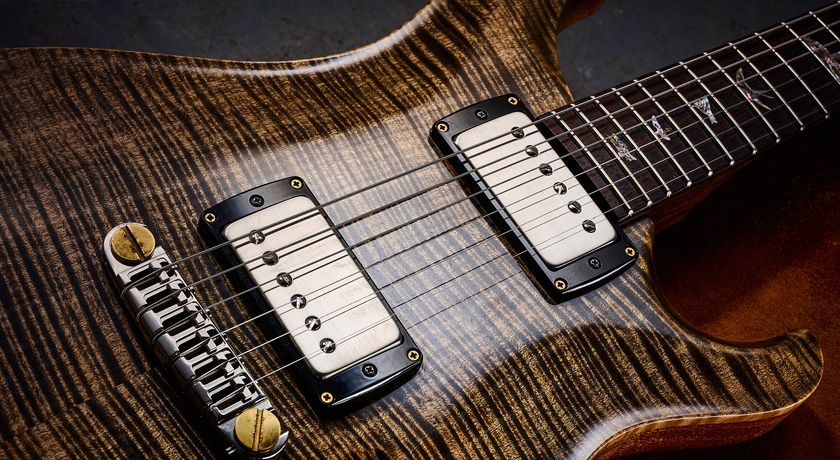
“This is no clichéd P.A.F.-repro pickup – it’s completely reinvigorated”: Bare Knuckle PolyPaf humbuckers review
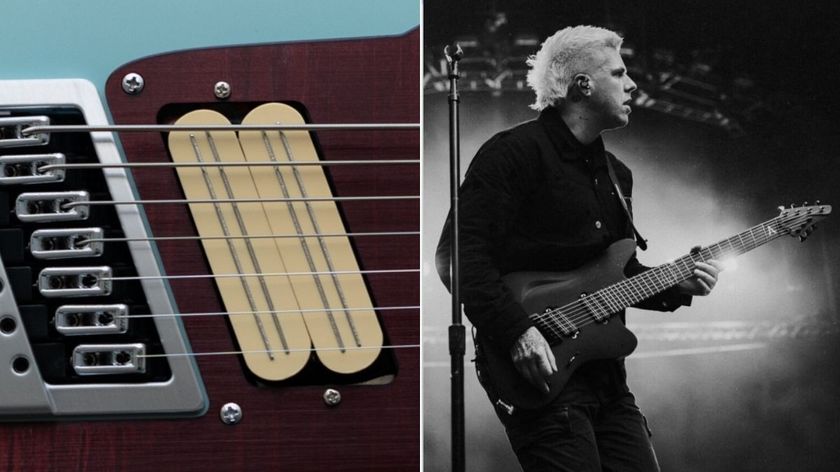
“He fell about laughing with glee as he tried them”: Spiritbox’s Mike Stringer has been honored with signature Bare Knuckles – the same pickups from his new Aristides offset




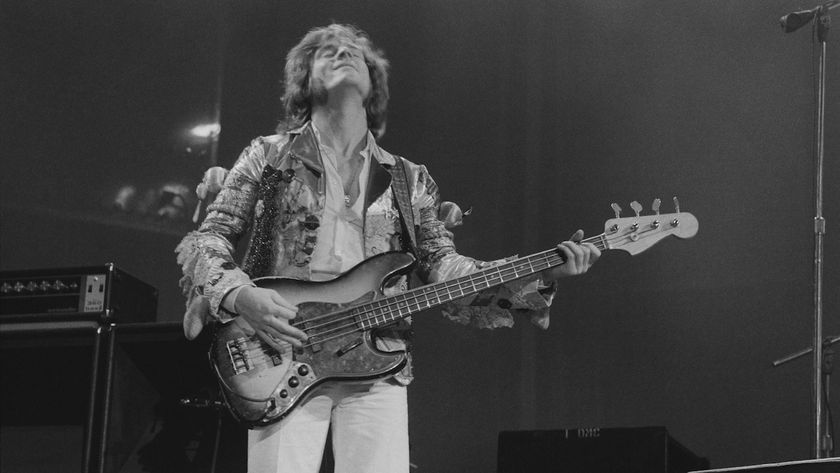
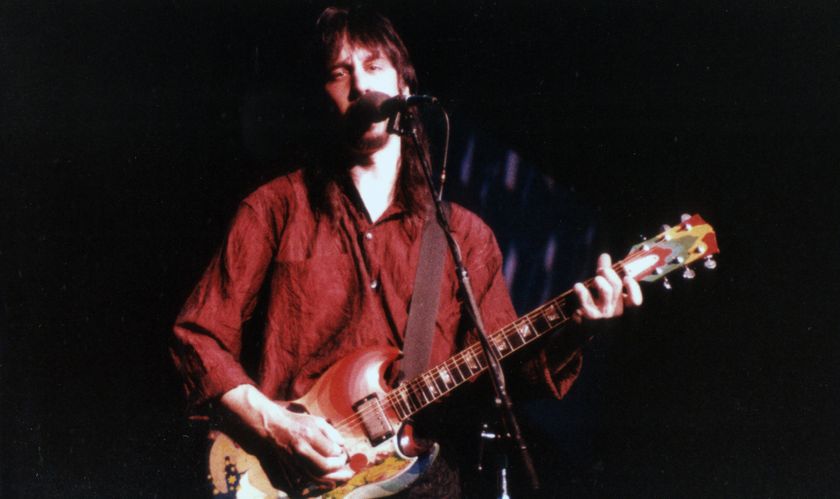


![Cobra Kai composers Zach Robinson [left] and Leo Birenberg in the studio. Pictured in front of a bank of keyboards, Robinson plays an Ibanez RG550, while Birenberg plays woodwind.](https://cdn.mos.cms.futurecdn.net/YfxDAzMdyf8Mrf9cURm53e-840-80.jpg)


